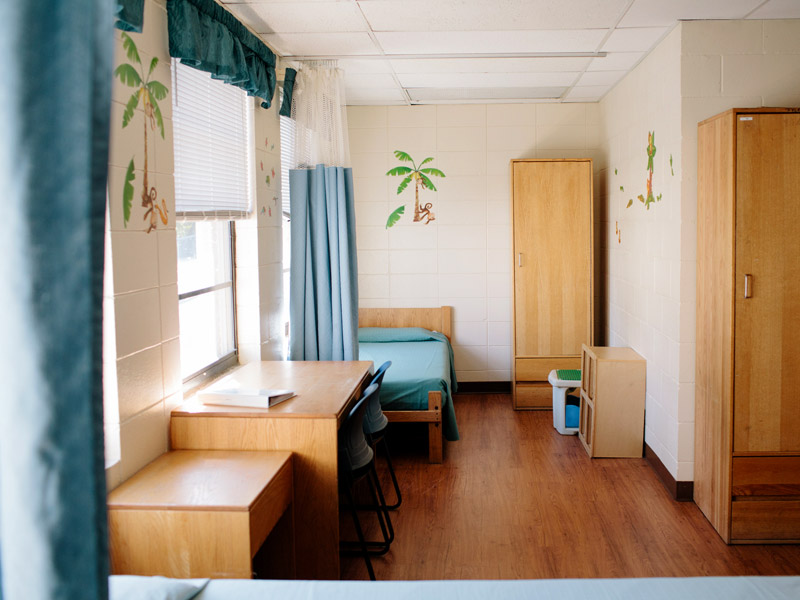Learn about the effects, causes, signs and symptoms of PTSD. Millcreek of Magee Treatment Center offers the best residential treatment and home-based programs for children & adolescents struggling with PTSD.
Understanding PTSD
Learn more about PTSD
The symptoms of posttraumatic stress disorder, also known as PTSD, can be crippling for an individual suffering from this distressing mental health condition. And while many people assume that adults are the only age group that can be affected by this illness, children and adolescents also struggle with this disorder after experiencing, witnessing, or learning about a trauma or traumatic event.
When a young person struggles with PTSD, his or her school performance, social functioning, and ability to feel a sense of contentment and well-being can be hindered. Additionally, youth with posttraumatic stress disorder are at risk of using or abusing substances, as experimentation with drugs or alcohol offer a false sense of relief from unpleasant emotions or feelings. Furthermore, if a child or adolescent experiences symptoms of PTSD over a long period of time, there is an elevated risk for the development of another mental illness. Thankfully, there are options for care available that can be of great help to young people with this condition. Effective treatment can help children and adolescents develop new skills for coping with and working through feelings and thoughts associated with the initial trauma or traumas. With appropriate care, young people do not have to live lives governed by the symptoms of PTSD.
Statistics
PTSD statistics
Despite the fact that a number of young people do not receive care for PTSD following a traumatic event, this mental health condition affects a number of children and adolescents. Studies that examined the prevalence of posttraumatic stress disorder among youth discovered that more female children and adolescents are affected by this disorder than male children and adolescents. Estimates suggest that 3-15% of female youth meet diagnostic criteria for PTSD, while 1-6% of male youth battle symptoms of this disorder. Further research is required to garner more accurate prevalence rates, however, mental health experts believe that many children could benefit from PTSD treatment.
Causes and Risk Factors
Causes and risk factors for PTSD
Children and adolescents can be especially vulnerable to the development of posttraumatic stress disorder. The reason for this has to do with the fact that young people often do not possess the necessary coping skills to overcome the stress that ensues following a trauma. Additionally, researchers believe that there are a number of other causes and risk factors that can make a youth susceptible to this mental health condition. Below are elaborations on these causes and risk factors, of which are widely accepted concepts by experts in the field of mental health:
Genetic: While PTSD is triggered by trauma, the vulnerability for this mental health condition can increase exponentially when an individual has a family history of certain mental health conditions. Especially for those who have a family history of anxiety disorders, there is an increased chance that a person will display signs of posttraumatic stress disorder following a trauma when this type of history is present.
Physical: Traumatic experiences have the capability of altering a person’s brain chemistry. When this occurs, certain neurochemicals can become imbalanced and cause symptoms of PTSD to manifest. Additionally, trauma can cause structural changes in a person’s brain, especially if trauma occurs on a regular basis. Furthermore, when a person has a genetic predisposition to certain anxiety disorders, there is a higher likelihood for the aforementioned neurochemicals to be imbalanced. Therefore, when a trauma occurs, there is a greater chance that posttraumatic stress disorder will develop.
Environmental: The development of posttraumatic stress disorder is heavily reliant on environmental influences as experiencing, witnessing, or learning about a trauma or traumas is what triggers the onset of this mental health condition. In addition to traumatic experiences, exposure to ongoing stress, abuse, neglect, or being victimized can eventually cause a young person to display symptoms of PTSD.
Risk Factors:
- Being female
- Family history of anxiety disorders or other mental health disorder(s)
- Having a preexisting mental health disorder(s)
- Suffering the loss of a loved one
- Lacking appropriate coping skills
- Insufficient support network
- Exposure to trauma(s)
- Being the victim of abuse and/or neglect
- Being bullied
- Being the victim of a crime
Signs and Symptoms
Signs and symptoms of PTSD
Every person responds to trauma in a different way. Depending on the type of trauma, and whether or not it was directly experienced, witnessed, or learned about, the signs that infer a person is suffering from PTSD can be vast. When a child or adolescent is battling this mental health condition, the following symptoms can be present and require care in order to alleviate the distress associated with posttraumatic stress disorder:
Behavioral symptoms:
- Bedwetting
- Sleepwalking
- Avoiding certain people
- Avoiding certain places
- Refusing to be part of situations or circumstances that are reminiscent of the trauma
- Exacerbated startle response
- Self-harm
- Aggressive or violent outbursts
- Engaging in risky sexual behaviors
Physical symptoms:
- Sleep disturbances
- Labored breathing
- Nausea
- Panic attacks
- Muscle tension
- Rapid heartbeat
- Vomiting
- Profuse sweating
- Trembling
- Flashbacks about the trauma
Cognitive symptoms:
- Night terrors
- Hallucinations
- Poor concentration
- Feeling as though one is out of his or her body
- Feeling detached from the world that surrounds a person
Psychosocial symptoms:
- Loneliness
- Emotional numbness
- Feelings of impending doom
- Distrustful of others
- Declined interest in things or activities that were once enjoyed
- Ongoing worry
- Unwarranted anger
- Pervasive sadness
- Low self-esteem
- Negative disposition
- Suicidal ideation
Effects
The effects of PTSD
Should a young person grapple with the symptoms of posttraumatic stress disorder, there is an increased possibility that he or she will experience effects that will negatively impact his or her social and emotional development. When symptoms of this condition persist, the following have been known to take place:
- Acting out behaviors
- Experimentation with or abuse of drugs and/or alcohol
- Development of another mental health condition
- Low self-esteem
- Pervasive feelings of worry
- Conflict with others
- Overwhelming feelings of fear
- Elevated levels of anxiety
- Poor attachment with caregivers
- Self-harm
- Suicidal ideation
- Suicide attempts
Co-Occurring Disorders
PTSD and co-occurring disorders
The distressing symptoms of posttraumatic stress disorder can trigger symptoms of other mental health disorders to appear. The following mental health conditions are known to occur in the event that the symptoms of PTSD remain present in a child or adolescent’s life for a prolonged period of time:
- Bipolar disorder
- Eating disorders
- Depressive disorders
- Borderline personality disorder
- Substance use disorders



